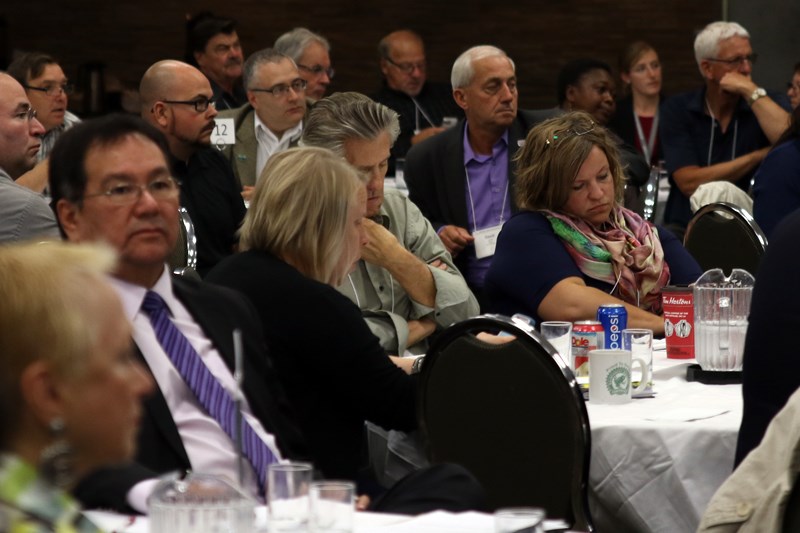THUNDER BAY -- If the Thunder Bay District alone is going to attract 50,000 new residents over the next 25 years to sustain its current economy, all of Northwestern Ontario is going to have to get busy.
Common Voice Northwest struck four committees to study local solutions to replacing the area's aging workforce following the first conference on the subject on Friday.
Youth, economic participation, infrastructure and education committees will work over the next two years to identify issues and develop strategies with the public, business, education, non-governmental and training sectors.
"I believe it has been a wake up call for a lot of them," said Common Voice Northwest executive director Iain Angus of the municipal leaders who attended the one-day conference.
"We've always heard population is changing in the Northwest but now we have the data to show exactly how it's changing."
Thunder Bay will have to attract 2,000 immigrants per year between now and 2041 to replace retiring baby boomers who are expected to live through the next quarter-century. If that influx doesn't happen, the district's economy will contract.
Angus believes municipalities of all sizes have to demonstrate the will to attract new citizens because even the small towns are facing out-migration into Kenora, Fort Frances or Sioux Lookout. A lot of those solutions will have to be homegrown because even per capita, Northwestern Ontario doesn't have the immigration infrastructure other areas of the country or province have.
"Certainly there has been some progress in terms of what Ontario is doing and what the federal government is doing with Ontario and the Northwest. We need a lot more," Angus said.
"the data shows if we don't do something, we won't have enough people to sustain what exists today whether it's the private or public sector. The bodies just won't be there that will be available to work and we have to change that."
The region's Indigenous population is the only identifiable population on the rise. In the Rainy River and Kenora districts, First Nations people will make up a far higher percentage of the population than has been the case in generations. From Indigenizing education to evolving the focus of economy, Common Voice chairwoman Wendy Landry said respectful coordination will be critical.
"We need Indigenous people to succeed and Indigenous people want to succeed. I think we should all be working together but I think we need to flip it a little bit. Instead of telling people how they need to do things, I think we need to listen to how things could be successful," Landry said.
"Supported communities do better and life is better. If communities are sustaining themselves, let's look at how they're doing that."
